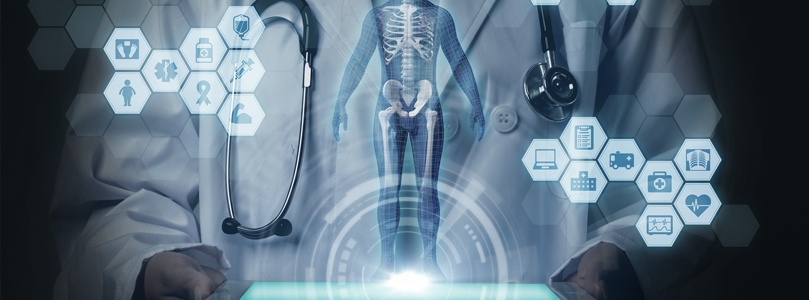
The Internet of Things, or IoT colloquially, is working its way slowly but surely into primary medical care, patient medical records, as well as medical devices. Connectivity, patient lifestyle improvements, and convenience are foremost among the advantages conferred. The field is moving forward rapidly, and to the benefit of both practitioners and patients. Here we’ll examine some of the significant technological ways these capabilities are making inroads.
Traditional “wired” patient monitors are evolving into wireless devices, providing patients with increased post-operative comfort and mobility, which can accelerate healing and shorten hospital stays. For example, a monitor using WiFi, Bluetooth or another wireless protocol that transmits patient vitals to a central nursing station can allow the patient to more easily get in and out of their hospital bed, move around the hospital and even be monitored remotely via a secure connection on their home wireless network. All of these developments can be very good for patient morale and rehabilitation, and simplify nurses’ routines.In terms of improving care for people with chronic diseases, the new generation of RF-enabled devices (such as insulin pumps for diabetes) is transforming how the affected are treated and monitored, also giving them more autonomy and generating important actionable data about their conditions.
Increased RF connectivity among traditional medical devices in healthcare facilities means that there is far more data being transmitted and available on networks (such as patient records, machine performance, equipment locations), all of which requires additional testing, monitoring, security, storage and backups.
The connectedness and accessibility of RF-enabled devices means faster patient-record sharing among healthcare stakeholders (e.g., general practitioners, specialists, health maintenance organizations/HMOs) and quicker remote device maintenance and updates, as well as other benefits.
Healthcare apps on personal “non-medical” devices such as smartphones, smartwatches and fitness bands are capable of recording, tracking and sharing data on heart rates, sleep patterns, stress levels and other personal indicators, which creates implications for healthcare monitoring beyond typical doctor-patient relationships.
As we’ve seen, the faces of healthcare, patient records, and medical devices (among others) are being slowly but inexorably changed by the Internet of Things, or more precisely in this case, massive multi-contextual interconnectivity. As we move into the future, we can expect to see more of these developments, and it’ll take close monitoring and coordination by advocacy, medical, and technological groups to ensure these connected technologies continue to be used to the benefit of all.
To speak with a test & quality expert please visit Averna’s website.
